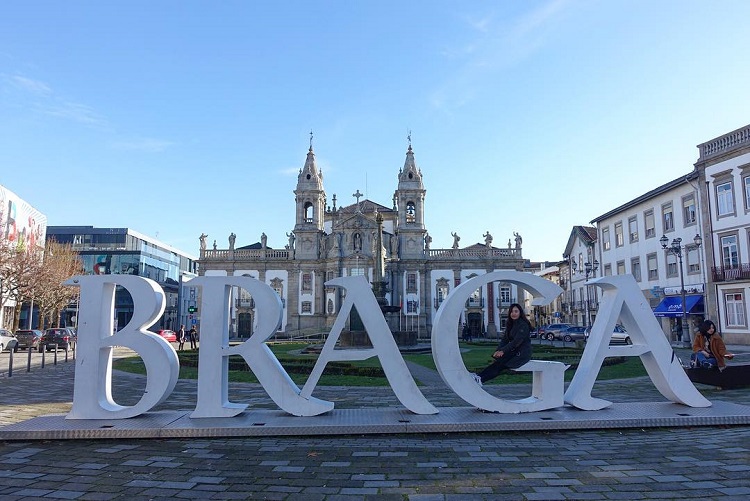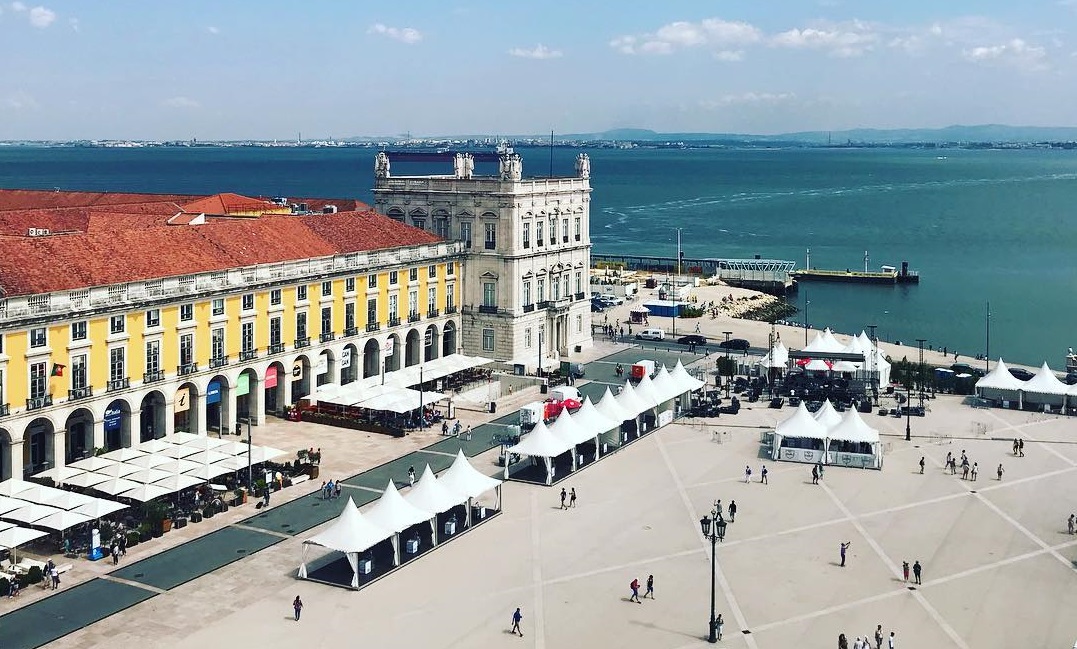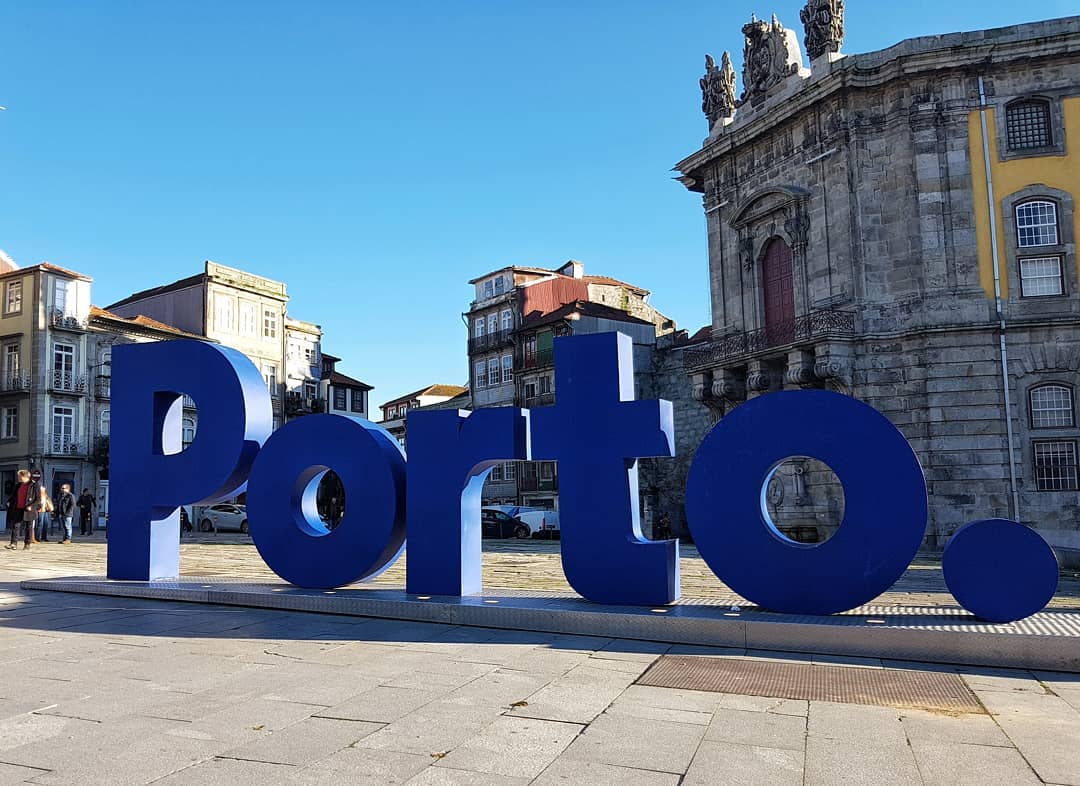Gastronomy in Portugal for travelers
In her book Invitation to Portugal, Mary Jean Kempner reaches the heart of the Portuguese diet: "The best Portuguese food is provincial, indigenous, eccentric and proud - a reflection of the chauvinism of this complex people. It does not take sides, it takes no air, it does not concessions or bows to Brillat-Savarin - and usually has a wonderful taste. "
Dinner Customs - Much Portuguese cuisine is based on olive oil and the generous use of garlic. If you select anything prepared to order, you can order it to be garlic free (garlic free).
It is customary in most establishments to order soup (invariably a large bowl filled to the brim), followed by a fish and a meat dish. Potatoes and rice probably accompany meat and fish dishes. In many restaurants, the chef presents at least one dish of the day . These dishes are prepared fresh that day and are often cheaper than regular offerings.
Kitchen
Couverts are small appetizers, often brought to your table the moment you sit down. These may include bread, cheese and olives. In many restaurants they are free; in others it is charged extra. Its a good idea to ask your waiter about the extra costs. In many places, the fee for these extras is per person. Remember: Not everything served at the beginning of the meal is free.
Another way to start your meal is to choose from a variety of appetizers, which can range from swordfish to olives and tuna. Of soup, the most popular choice is the green broth . Made of cabbage, sausage, potatoes and olive oil, it is common in the north. Another ubiquitous soup is Alentejo soup, boiled with garlic and bread, among other ingredients. Portuguese cooks twist every bit of nutrition in their fish, meat and vegetables. Fishermen make shellfish soup by boiling the shells of various crustaceans and then richly flavoring the broth and filling it with white wine.
The first main dish you will probably find on any menu is codfish , a loyal friend of the Portuguese. Passing fishing villages in the north, you will see shelves and shelves of fish drying in the sun. Foreigners may not be enthusiastic about cod, although they are prepared in imaginative ways. The most common ways to serve it include the famous cod (cooked with vegetables such as carrots, cabbage and spinach and then roasted), codfish (fried in olive oil with onion and potato and flavored with garlic), cod Gomes de Sá ( stewed with black olives, potatoes and onions, then boiled and topped with sliced boiled egg) and barbecue cod .
In addition to codfish, the classic national dish is caldeirada, the Portuguese version of bouillabaisse. Prepared at home, it is a spicy stew containing pieces of the last catch.
The next dish is the portuguese sardines. Found on the Atlantic coast of the Iberian Peninsula, as well as in France, the countrys 6- to 8-inch sardines also come from Setúbal. When strolling through the Alfama alleys or passing the main streets of small villages in Portugal, you will sometimes see women kneeling in front of braziers at the front door grilling their large sardines. Grilled, they are called roasted sardines.
Seafood is one of the great delicacies of the Portuguese table. Their scarcity and demand from foreign markets, however, led to astronomical prices. The price of lobsters and crabs changes every day, depending on the market. In the menus, youll see the abbreviation Price V., which means "variable price". When the waiter brings a plate of seafood to your table, always ask for the price.
Many of these deep-sea creatures, such as giant crabs, are cooked and displayed in restaurant windows. If you decide to splurge, ask for fresh seafood only. It may be misleading, as even experts can, but at least it will have required your fish to be fresh and not left out of the window the day before. When fresh, santola (crab) is a delicacy. Stuffed Santola (stuffed crab) can be very spicy for unused Western palates; Clams (clams) are a safer choice. Lobster is translated as "lobster" but is, in fact, lobster; It is best when served unadorned.
The variety of cheap and tasty fish served here includes Setúbal red mullet, sea bass, lenguado ( fish ) and hake (hake) with a sweet taste . Less attractive for average dining, but preferred by many demanding palates, are eiros (eels), octopus (Octopus) and lampreas (lamprey, a seasonal food in the Minho Norte district).
Piri-piri is a sauce made with Angola pepper. Jennings Parrott once wrote: "Once you have tasted it, you will understand why Angola wanted to get you out of the country." Unless you are extremely brave, consider asking for something else. Travelers used to hot and spicy food, however, may like it.
The residents of Porto are known as gut eaters. The local specialty is the bent (beans with beans), a favorite of workers. The Portuguese stew is another popular dish. This stew often features both beef and pork along with fresh vegetables and sausages. The main offering of the beer tavern is steak in the frying pan , usually served on a brown ceramic plate with a fried egg on top. Thinly sliced baits (veal livers) are usually well prepared and braised with onions.
Portuguese meat, especially beef and veal, is less satisfactory. The best meat in Portugal is pork , usually tender and juicy. Especially good is the Alentejo pork (fried pork in succulent sauce with clams), often cooked with onion and herb-flavored tomatoes. Kid (roasted kid) is another treat, flavored with herbs and garlic. Chicken tends to be hit-or-miss and perhaps best when skewered chicken, or roast golden brown chicken . At the time, the game is good, especially partridge (partridge) and stewed quail (roasted quail).
Cheese (cheese) is usually consumed separately and not with fruits. The most common varieties of Portuguese cheese are made from sheeps or goats milk. A popular variety is Serra cheese (literally hill cheese). Other cheeses popular are the cheese Alentejo and cheese Azeitão. Many prefer Flemish cheese (similar to Dutch Gouda).
Although trapped in isolated monasteries and convents, Portuguese nuns and monks have created some original sweet mixtures. Many of these desserts are sold in small pastry shops across the country. In Lisbon, Porto and some other cities you can visit a tea room at 16h to taste these delicacies. Regrettably, few restaurants offer regional desserts.
The most typical dessert is rice pudding, cinnamon flavored rice pudding . Flan, or caramel cream, appears in all menus. If you are in Portugal in summer, order an Alcobaça peach. One of these juicy and juicy yellow fruits will spoil you forever for all the other peaches. Sintra is known for its strawberries, Setúbal for its orange groves, the Algarve for its almonds and figs, Elvas for its plums, the Azores for its pineapples and Madeira for its passion fruit. Some people believe that if you eat too much, it will drive you crazy.
Portugal does not offer many egg dishes except omelets. However, eggs are used extensively in many sweets. Although sugar-cooked egg yolks may not look appealing, you may want to try some of the most original offerings. The best known are soft eggs, which originate from Aveiro. From the same district capital come the eggs of thread .
Wine
For generations, much of what the English-speaking world knew about Portugal came from reports that wine merchants brought back to Britain from Douro Valley wineries. Today Portugal is famous around the world for its Port wines, and many parts of central and northern Portugal are covered with well-kept vines that sprout from intricate terraces.
Port: Known for decades as English wine, port was once the uncorked drink to toast in England. In gentlemens clubs, the vintage port (only 1% of all produced port) was dispensed with a crystal bottle. Later, when the English working classes began drinking a lesser port in the Midland mill towns, they often infused it with lemon. Today the French consume almost three times the amount of port that the British make.
About 40 grape varieties go to the port. Made from grapes grown in lava rich soil, the door today is vintage or mixed, and ranges from white to tawnies and full-bodied reds. The latter is often eaten at the end of a meal with cheese, fruit or nuts. You can visit a port wine shop to learn more about the port - and, most importantly, enjoy it. The best places to visit are concentrated in Vila Nova de Gaia, a suburb of Porto opposite the Douro, from Portos commercial center.
Green Wines (pronounced veen -yosh vair -desh): These "green wines" are more lemon in color. Many come from the Minho district in northwest Portugal, which, like Galicia in northern Spain, receives heavy rain. Grown in a humid environment, the grapes are harvested while young. Some wine aficionados do not consider this wine serious, finding it very light. With its fruity flavor, they say it suggests the cool summer breeze. It is often served with fish, and many Portuguese use it as a thirst quencher the way an American can consume a soda. The best green wines are from Monção, south of the Minho River. Amarantes are also praised.
Dão: Dão is produced from grapes grown south of the Douro, in the mountainous heart of the north. "Our vines have tender grapes," goes the saying in all the Mondego and Dão valleys, each divided by a river. Summers are hot and wet, cold and often bitter winters. Much of Dão wine is red, namely mature wines, matured in oak barrels for almost 2 years before being bottled. The wine is velvety texture and often accompanies roasts. In almost every restaurant in Portugal, you will find white (white) or Dão tinto (red). The best bottles of Dão red wine are the reserve ("reserve" is printed on the label). Other names to look for include Knights Gate and Highlands. da -or, or less flattering, dung. )
Madeira: Made from grapes rooted in the volcanic soil of the island, this wine dates back to its origins in 1419. Its history is similar to that of the port in that it was highly prized by British aristocratic families. George Washington was among the earliest admirers of wine, though the wood he consumed little resembled todays bottled product. Modern Madeira wines are lighter and drier than the sweet and thick types favored by past generations.
The wine, which is fortified and blended, includes varieties such as Malmsey, Malvasia and Boal - sweet and heavy wines usually served with dessert or at the end of a meal. Less sweet Verdelho is often consumed as a light drink between meals, just as a Spaniard lowers a glass of sherry. Dry and light, Sercial is best as an aperitif and is often served in Portugal with roasted and salted almonds. None of these wines are likely to be consumed with the main course at dinner.
Beer
Beer (beer) is gaining new followers annually. One of the best craft beers is sold under the name Sagres, honoring the city in the Algarve that has enjoyed associations with Henry the Navigator.
Dinner Customs - Much Portuguese cuisine is based on olive oil and the generous use of garlic. If you select anything prepared to order, you can order it to be garlic free (garlic free).
Kitchen
Couverts are small appetizers, often brought to your table the moment you sit down. These may include bread, cheese and olives. In many restaurants they are free; in others it is charged extra. Its a good idea to ask your waiter about the extra costs. In many places, the fee for these extras is per person. Remember: Not everything served at the beginning of the meal is free.
Another way to start your meal is to choose from a variety of appetizers, which can range from swordfish to olives and tuna. Of soup, the most popular choice is the green broth . Made of cabbage, sausage, potatoes and olive oil, it is common in the north. Another ubiquitous soup is Alentejo soup, boiled with garlic and bread, among other ingredients. Portuguese cooks twist every bit of nutrition in their fish, meat and vegetables. Fishermen make shellfish soup by boiling the shells of various crustaceans and then richly flavoring the broth and filling it with white wine.
In addition to codfish, the classic national dish is caldeirada, the Portuguese version of bouillabaisse. Prepared at home, it is a spicy stew containing pieces of the last catch.
The next dish is the portuguese sardines. Found on the Atlantic coast of the Iberian Peninsula, as well as in France, the countrys 6- to 8-inch sardines also come from Setúbal. When strolling through the Alfama alleys or passing the main streets of small villages in Portugal, you will sometimes see women kneeling in front of braziers at the front door grilling their large sardines. Grilled, they are called roasted sardines.
Seafood is one of the great delicacies of the Portuguese table. Their scarcity and demand from foreign markets, however, led to astronomical prices. The price of lobsters and crabs changes every day, depending on the market. In the menus, youll see the abbreviation Price V., which means "variable price". When the waiter brings a plate of seafood to your table, always ask for the price.
Many of these deep-sea creatures, such as giant crabs, are cooked and displayed in restaurant windows. If you decide to splurge, ask for fresh seafood only. It may be misleading, as even experts can, but at least it will have required your fish to be fresh and not left out of the window the day before. When fresh, santola (crab) is a delicacy. Stuffed Santola (stuffed crab) can be very spicy for unused Western palates; Clams (clams) are a safer choice. Lobster is translated as "lobster" but is, in fact, lobster; It is best when served unadorned.
The variety of cheap and tasty fish served here includes Setúbal red mullet, sea bass, lenguado ( fish ) and hake (hake) with a sweet taste . Less attractive for average dining, but preferred by many demanding palates, are eiros (eels), octopus (Octopus) and lampreas (lamprey, a seasonal food in the Minho Norte district).
Piri-piri is a sauce made with Angola pepper. Jennings Parrott once wrote: "Once you have tasted it, you will understand why Angola wanted to get you out of the country." Unless you are extremely brave, consider asking for something else. Travelers used to hot and spicy food, however, may like it.
The residents of Porto are known as gut eaters. The local specialty is the bent (beans with beans), a favorite of workers. The Portuguese stew is another popular dish. This stew often features both beef and pork along with fresh vegetables and sausages. The main offering of the beer tavern is steak in the frying pan , usually served on a brown ceramic plate with a fried egg on top. Thinly sliced baits (veal livers) are usually well prepared and braised with onions.
Portuguese meat, especially beef and veal, is less satisfactory. The best meat in Portugal is pork , usually tender and juicy. Especially good is the Alentejo pork (fried pork in succulent sauce with clams), often cooked with onion and herb-flavored tomatoes. Kid (roasted kid) is another treat, flavored with herbs and garlic. Chicken tends to be hit-or-miss and perhaps best when skewered chicken, or roast golden brown chicken . At the time, the game is good, especially partridge (partridge) and stewed quail (roasted quail).
Cheese (cheese) is usually consumed separately and not with fruits. The most common varieties of Portuguese cheese are made from sheeps or goats milk. A popular variety is Serra cheese (literally hill cheese). Other cheeses popular are the cheese Alentejo and cheese Azeitão. Many prefer Flemish cheese (similar to Dutch Gouda).
Although trapped in isolated monasteries and convents, Portuguese nuns and monks have created some original sweet mixtures. Many of these desserts are sold in small pastry shops across the country. In Lisbon, Porto and some other cities you can visit a tea room at 16h to taste these delicacies. Regrettably, few restaurants offer regional desserts.
The most typical dessert is rice pudding, cinnamon flavored rice pudding . Flan, or caramel cream, appears in all menus. If you are in Portugal in summer, order an Alcobaça peach. One of these juicy and juicy yellow fruits will spoil you forever for all the other peaches. Sintra is known for its strawberries, Setúbal for its orange groves, the Algarve for its almonds and figs, Elvas for its plums, the Azores for its pineapples and Madeira for its passion fruit. Some people believe that if you eat too much, it will drive you crazy.
Portugal does not offer many egg dishes except omelets. However, eggs are used extensively in many sweets. Although sugar-cooked egg yolks may not look appealing, you may want to try some of the most original offerings. The best known are soft eggs, which originate from Aveiro. From the same district capital come the eggs of thread .
Wine
For generations, much of what the English-speaking world knew about Portugal came from reports that wine merchants brought back to Britain from Douro Valley wineries. Today Portugal is famous around the world for its Port wines, and many parts of central and northern Portugal are covered with well-kept vines that sprout from intricate terraces.
Port: Known for decades as English wine, port was once the uncorked drink to toast in England. In gentlemens clubs, the vintage port (only 1% of all produced port) was dispensed with a crystal bottle. Later, when the English working classes began drinking a lesser port in the Midland mill towns, they often infused it with lemon. Today the French consume almost three times the amount of port that the British make.
About 40 grape varieties go to the port. Made from grapes grown in lava rich soil, the door today is vintage or mixed, and ranges from white to tawnies and full-bodied reds. The latter is often eaten at the end of a meal with cheese, fruit or nuts. You can visit a port wine shop to learn more about the port - and, most importantly, enjoy it. The best places to visit are concentrated in Vila Nova de Gaia, a suburb of Porto opposite the Douro, from Portos commercial center.
Green Wines (pronounced veen -yosh vair -desh): These "green wines" are more lemon in color. Many come from the Minho district in northwest Portugal, which, like Galicia in northern Spain, receives heavy rain. Grown in a humid environment, the grapes are harvested while young. Some wine aficionados do not consider this wine serious, finding it very light. With its fruity flavor, they say it suggests the cool summer breeze. It is often served with fish, and many Portuguese use it as a thirst quencher the way an American can consume a soda. The best green wines are from Monção, south of the Minho River. Amarantes are also praised.
Dão: Dão is produced from grapes grown south of the Douro, in the mountainous heart of the north. "Our vines have tender grapes," goes the saying in all the Mondego and Dão valleys, each divided by a river. Summers are hot and wet, cold and often bitter winters. Much of Dão wine is red, namely mature wines, matured in oak barrels for almost 2 years before being bottled. The wine is velvety texture and often accompanies roasts. In almost every restaurant in Portugal, you will find white (white) or Dão tinto (red). The best bottles of Dão red wine are the reserve ("reserve" is printed on the label). Other names to look for include Knights Gate and Highlands. da -or, or less flattering, dung. )
Madeira: Made from grapes rooted in the volcanic soil of the island, this wine dates back to its origins in 1419. Its history is similar to that of the port in that it was highly prized by British aristocratic families. George Washington was among the earliest admirers of wine, though the wood he consumed little resembled todays bottled product. Modern Madeira wines are lighter and drier than the sweet and thick types favored by past generations.
The wine, which is fortified and blended, includes varieties such as Malmsey, Malvasia and Boal - sweet and heavy wines usually served with dessert or at the end of a meal. Less sweet Verdelho is often consumed as a light drink between meals, just as a Spaniard lowers a glass of sherry. Dry and light, Sercial is best as an aperitif and is often served in Portugal with roasted and salted almonds. None of these wines are likely to be consumed with the main course at dinner.
Beer
Beer (beer) is gaining new followers annually. One of the best craft beers is sold under the name Sagres, honoring the city in the Algarve that has enjoyed associations with Henry the Navigator.
Outros Artigos Populares no Blogue
-


This is the best city to live in Portugal 2020
The ranking of the best city to live in Portugal the successes, Braga among the cities with the best quality of life in Europe, the norther... -


Lavras lift is one of the most secret in Lisbon and will give a beautiful viewpoint
Inaugurated on April 19, 1884, it connects Largo da Anunciada and Rua Câmara Pestana, through Calçada do Lavra. Originally it used a rac... -


Portugal will have the largest suspension pedestrian bridge in the world we already have images
It is in the municipality of Arouca that is being born the "largest suspension pedestrian bridge in the world" and the construct... -


Things to do in Lisbon travel tips
Bathed in pure Atlantic light, crowned by the St. Georges Castle storybook and spanning seven hills, Lisbon is one of Europes most visually stunning c... -


8 must-see places in Serra da Estrela sky
Loriga is known as the “Portuguese Switzerland” due to its extraordinary landscape and geographical location. Surrounded b... -


Braga elected the third city in Europe with the best quality of life Portugal
The northern city has risen 12 positions in the ranking in the last three years. Health, education and housing are the areas that most satisfy th... -


The 8 Best Dinner Bets in Portugal
Clara Restaurante (Lisbon; tel. 21 / 885-30-53; www.lisboa-clara.pt ): This elegant citadel, with a refined dining room playing soft p... -


Porto is the best city in the world to find LOVE
The City Life Index 2018 of Time Out magazine listed the best cities in the world. And the city Invicta comes in second place. Porto is ...
